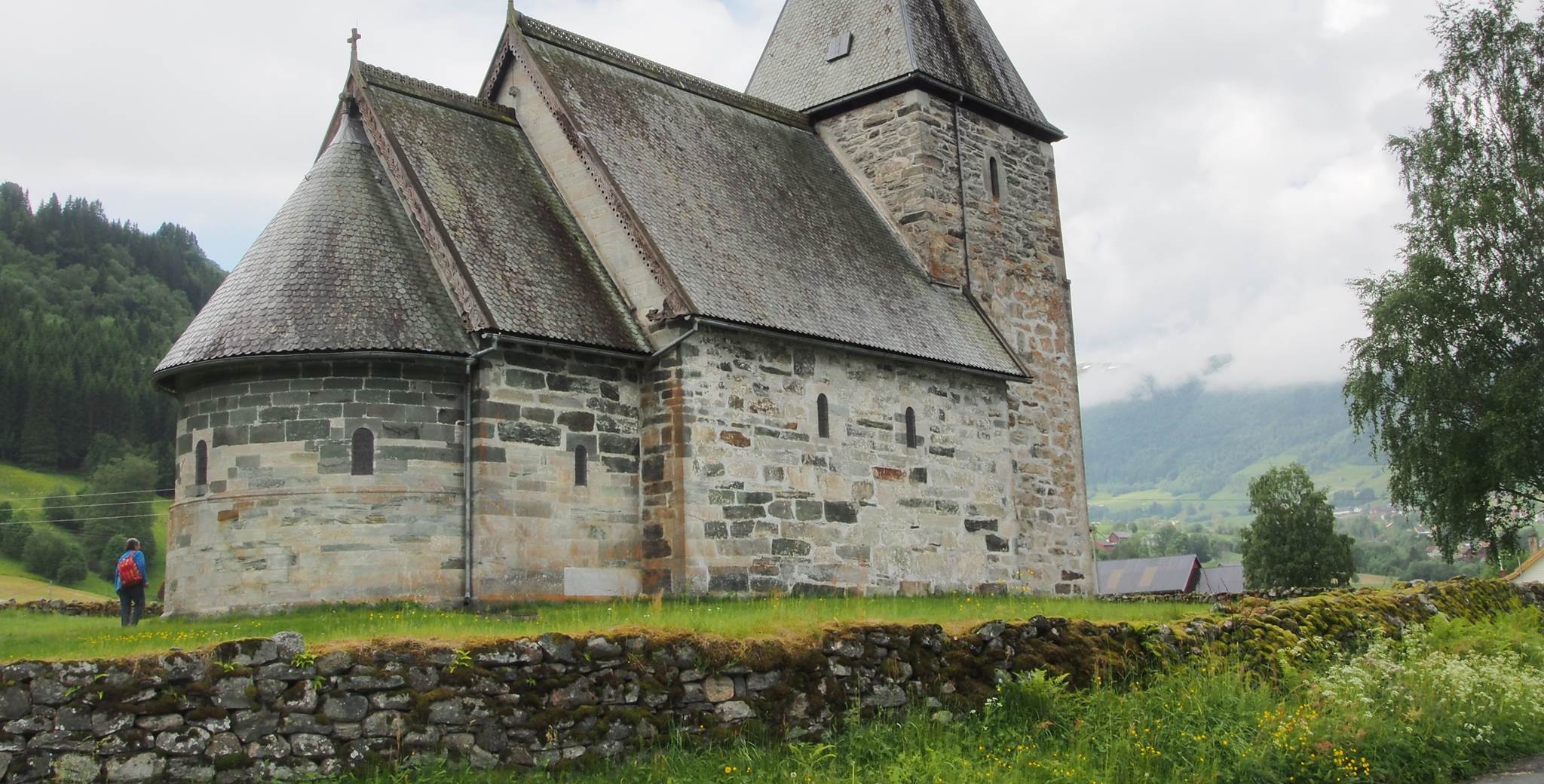
Vik i Sogn, Sogn og Fjordane (Vestland)
Owned by the National Trust of Norway since 2019.
Was to be sold for stone. When architect Blix was in charge of the restoration of Håkon’s Hall in Bergen, he was offered soapstone from Hove church, which was to be pulled down. Once the new Vik church was completed in 1877, Hove church was surplus to requirements. Blix bought the church to prevent it being torn down, and he restored it according to his own plans and funded the work himself. The church interior is characterised by Blix's choices, and the decor and furnishings reflect how he imagined the church may have looked in the Middle Ages. The church walls are covered in colourful decoration, and the nave has a dado painted in imitation ashlar. The chancel is lavishly decorated. The altar area is framed by a painted ashlar pattern, and the ceiling of the dome above the altar is painted in a vivid blue like the sky with sun and moon. The medieval stone altar is preserved, and the altar stone contains a reliquary covered by a slab of marble. Blix owned the church at the time of his death in 1901 and is buried beneath the church floor.
The Hove Madonna – a copy will be made. The University Museum of Bergen’s church art collection contains a madonna and child sculpture from about 1230 that came from Hove stone church. Local forces have made endeavours to return the madonna to the church in the form of a copy. The company Treskjærerverkstedet AS is in the process of carving a copy of the Hove Madonna, and with the help of the University Museum of Bergen, the parts that are missing from the original will be included in the copy. The work is funded by collected funds, and donations of all sizes are welcome: bank account number 3800.57.40042 or Vipps number 118016
Things to do in the area: Mountains, fjord, salmon fishing, cultural heritage sites and culinary experiences. The magnificent fjord landscape of Sogn boasts a wealth of possibilities. There are medieval churches at Hopperstad and Hove, old houses at Vikøyri, and you can enjoy amazing views of the Sognefjord from Fridtjovparken park with the 22-metre statue of Fridtjov the Bold, which was a gift from Wilhelm II in 1913. Or you can visit Ostebaren cheese bar in the dairy where the Tine dairy group used to produce the Norwegian specialty gamalost (‘old cheese’). Visit Norway
Sources: Kirker i Norge. Middelalder i stein Øystein Ekroll, Stige M and Havran J. ARFO 2000/ Peter Andreas Blix. I strid for vern og vekst. Gaute Losnegård, Rolf Losnegård. Selja Forlag 2001/wikipedia/www.norske-kirker.net
Opening hours
- Season: 21.06 - 17.08
- Opening hours: 11.00 - 16.00
- Pre-season: Sat-Sun. 11.00 - 16.00 (01.06/07.06-08.06/14.06.-15.06)
- Guiding for groups outside ordinary opening hours on request with booking in advance
Ticket prices
- Adults: 100,- NOK
- Groups: 100,- NOK pp
- Seniors: 80,- NOK
- Family: 250,- NOK
- Students/child: 70,- NOK
- Ticket prices 2025
Visit us
Ingen Adresse
Contact us
- Epost: hove@fortidsminneforeningen.no
- Tlf: +47 401 55 971


